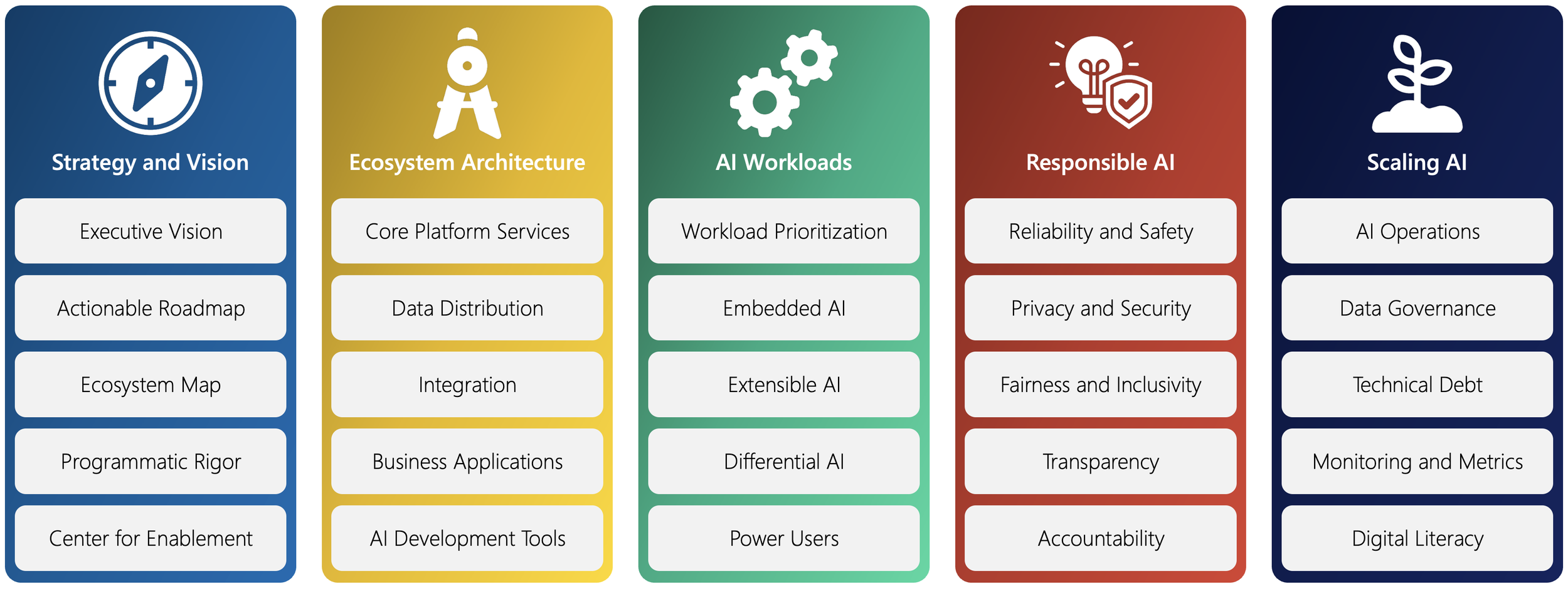
Framework
Crafting your future-ready enterprise AI strategy
We developed the AI Strategy Framework to guide organizations looking to adopt and scale trustworthy AI. This model sets forth five pillars atop which leaders should construct their AI strategy, evaluating their AI maturity, risks, and opportunities at any point in their journey—including when just getting started. This framework provides strategy to help mitigate those risks, seize those opportunities, and mature use of AI over time.
-

Strategy
Establish and advance the aspirations, roadmap, and rigor for successful AI.
-

Ecosystem
Mature the technical ecosystem upon which trustworthy AI depends.
-

AI Workloads
Deploy AI scenarios that meaningfully impact the organization’s mission.
-

Responsible AI
AI that is reliable, safe, private, secure, inclusive, transparent, accountable.
-

Scaling AI
Scale and manage AI to harness future waves of tech advancement.

The “North Star”: Scaling Trustworthy AI in a complex, multi-cloud global financial institution
The Center for Trustworthy AI applied the AI Strategy Framework guiding the CIO and his team at an international bank through the development of their Trustworthy AI Strategy and vision, ecosystem architecture, and workload roadmap to scale AI across their multi-cloud (Microsoft, Amazon, and others) digital ecosystem.
Each of the pillars contains five component dimensions that must be realistically assessed and continually matured in order to adopt, scale, and mitigate risk in AI. Incidentally, because AI depends on a sound technical foundation in terms of data estate, application portfolio, governance, security, etc., those who embrace this model find that they significantly mature the strategic architecture of their technology ecosystem overall.

